36 Fascinating Asian Preserved Vegetables Worth Exploring
Asian preserved vegetables represent a culinary art that elevates fresh produce into bold, flavor-packed treasures using time-honored techniques.
Steeped in centuries of cultural heritage, these ingredients embody preservation methods carefully handed down through generations.
Processes like fermentation, salting, and drying turn everyday vegetables into extraordinary taste sensations that enrich countless dishes.
Master artisans handpick the finest vegetables and apply precise methods that amplify natural flavors while extending their shelf life.
Regional styles highlight unique approaches shaped by local climates, farming traditions, and ancestral knowledge.
Each preserved vegetable carries a story of ingenuity, tradition, and profound appreciation for seasonal bounty.
For centuries, families and communities have depended on these transformative practices to preserve nutrition during tough seasons.
Dive into the fascinating world of 36 distinct Asian preserved vegetables here:
Asian Preserved Vegetable Types That Add Zing
Pickled, fermented, or spiced, Asia’s preserved vegetables are pantry heroes. They bring crunch, tang, and umami to dishes from rice bowls to sandwiches.
Baechu-Kimchi
Baechu-kimchi is a spicy, tangy fermented cabbage dish central to Korean cuisine, crafted by coating whole Napa cabbages with a complex blend of gochugaru chili flakes, garlic, and jeotgal (fermented seafood).
Traditional preparation involves carefully layering seasoned cabbage in ancient earthenware called onggian, which helps develop its signature intense flavor profile.
Fermentation typically takes several days, allowing ingredients to meld and create a sharp, pungent taste.
Salt and rice paste help preserve the cabbage while encouraging beneficial bacterial growth.
Ingredients like radishes, carrots, and green onions add depth and texture to the mixture.
Ginger and fish sauce contribute additional layers of umami and complexity.
Korean families often prepare large batches during seasonal gatherings.
Each region in South Korea offers subtle variations in recipe and technique, reflecting local culinary traditions.
Kimchi
Kimchi are spicy, fermented Korean vegetables that transform ordinary side dishes into flavor-packed culinary experiences.
Korean cuisine celebrates this ancient dish dating back two thousand years, originally called chimchae meaning "soaked vegetables." Fermentation creates complex layers of salty, sweet, and sour tastes through ingredients like hot chili peppers, fish paste, leeks, ginger, and garlic.
Salt and spices work together to preserve vegetables and develop intense, robust flavors.
Traditional recipes involve carefully slicing vegetables and marinating them in brine with precise seasoning combinations.
Families pass down unique kimchi preparation methods through generations, making each batch slightly different.
Koreans consider kimchi a staple accompaniment to almost every meal, serving it as a starter or side dish.
Western food cultures have recently embraced this nutritious and intensely flavorful fermented delicacy.
Tsukemono
Tsukemono are traditional Japanese pickles that serve as a versatile and essential component in Japanese cuisine, offering a crisp, tangy flavor profile with remarkable preservation techniques.
Japanese households and restaurants routinely prepare these colorful pickles using multiple vegetables like daikon radish, cucumbers, eggplant, carrots, and ginger through various fermentation methods.
Salt, rice bran, or vinegar serve as primary pickling agents, creating unique textures and intense flavors that complement rice dishes and beverages.
Preservation methods range from quick salt-based techniques to complex fermentation processes that can take weeks or months.
Many Japanese families maintain generational pickling traditions, passing down specific recipes and techniques through generations.
Pa Kimchi
Pa kimchi delivers a fiery punch of flavor through fermented green onions marinated in a bold spicy mixture of chili flakes, fish sauce, ginger, and garlic.
Korean kitchens traditionally prepare this banchan during spring when green onions reach peak freshness and availability.
Anchovy sauce adds depth to the complex seasoning, while optional rice flour helps bind the pungent paste.
Sesame seeds provide a delicate garnish that enhances the kimchi's visual and textural appeal.
Fermentation develops intense tangy notes and increases the dish's probiotic benefits.
Small batches allow for precise flavor control and optimal preservation.
Dongchimi
Dongchimi are crisp white radish pickles beloved in South Korean winter cuisine, traditionally prepared by immersing sliced or whole Korean radishes in a light, sweet-salty brine that transforms simple vegetables into a refreshing delicacy.
Winter vegetables like mu radish get pickled whole or chopped, creating a tangy side dish or appetizer that enhances meals with its cool, bright flavor.
Typical ingredients include onions, garlic, ginger, Korean pear, and green chili peppers that add complexity to the pickle's profile.
Salt and water form the fundamental pickling liquid, allowing natural fermentation to develop subtle depth.
Koreans enjoy dongchimi as a standalone appetizer or incorporate it into cold noodle dishes.
Preservation techniques ensure dongchimi remains a staple through cold winter months.
Fermenting process develops a light, refreshing taste that cleanses the palate and provides nutritional benefits.
Tursu
Tursu are vibrant Turkish pickled vegetables that transform seasonal produce into tangy, preserved delicacies through an ancient fermentation technique.
Colorful vegetables like eggplant, zucchini, onions, carrots, cucumber, beets, garlic, and grape leaves get packed into jars with vinegar and brine for months of flavor development.
Winter food preservation sparked this tradition thousands of years ago when farmers needed to store fresh vegetables for cold months.
Pickle juice called tursu suyu serves as a refreshing summer drink alongside the vegetable medley.
Jars of tursu add zesty complexity to meals as a popular appetizer.
Vinegar and salt create the signature sharp taste that makes these pickles memorable.
Fermentation develops deep, complex flavors that elevate simple vegetables.
Tursu reflects Turkey's rich culinary heritage of transforming basic ingredients into extraordinary dishes.
Oi Sobagi
Oi sobagi are refreshing Korean cucumber kimchi parcels bursting with spicy, tangy flavors unique to summer cuisine.
Cucumbers get partially quartered or cut into smaller pieces before being salted and stuffed with a zesty paste made from chili flakes, fish sauce, and aromatic ingredients.
Korean radish and carrots sometimes join the mix, adding extra depth to the kimchi's complex profile.
Garlic, ginger, and chives provide sharp, intense undertones that complement the cucumber's cool crunch.
Traditional preparation involves coating or stuffing cucumbers with a vibrant fermented mixture that develops rich, pungent notes.
Salt draws out moisture, concentrating the vegetable's natural essence while creating a perfect vehicle for the spicy filling.
These pickle-like side dishes pair wonderfully with Korean soups and stews, offering a crisp counterpoint to warm, hearty meals.
Oi sobagi showcases Korean cuisine's masterful balance of fresh ingredients and bold seasonings.
Chinese Pickles (Xian Cai)
Chinese pickles (Xian cai) transform fresh vegetables into tangy, preserved delicacies through an ancient fermentation technique originating in Zhou dynasty China.
Specialty porcelain urns specifically designed for pickling showcase the cultural significance of this culinary practice.
Picklers combine water, vinegar, and aromatic spices like Sichuan peppercorns and ginger to create complex flavor profiles.
Traditional pickle varieties include cabbage, eggs, lettuce hearts, cucumbers, mustards, radishes, and bamboo shoots.
Chinese households preserve over 130 different pickle styles as essential side dishes and appetizers.
Salt, vinegar, and spice combinations determine each pickle's unique taste and texture.
Fermentation techniques passed through generations ensure these pickles remain a beloved part of Chinese cuisine.
Kkakdugi
Kkakdugi is a zesty Korean radish kimchi celebrated for its bold, spicy cubed texture and fermented punch.
Korean home kitchens traditionally prepare this vibrant side dish by cutting radishes into precise geometric cubes and seasoning them with fiery red chili powder, aromatic ginger, and sharp onions.
Fermentation transforms the raw radishes into a tangy, crunchy condiment that adds explosive flavor to meals.
Restaurants across South Korea serve kkakdugi as a standard banchan alongside main dishes, providing a sharp contrast to milder flavors.
Salt and gochugaru (Korean chili flakes) create the signature spicy profile that makes this kimchi unique.
Families often prepare kkakdugi with slight recipe variations, passing down techniques through generations.
Preservation techniques allow the kimchi to develop deeper, more complex tastes over several days of fermentation.
Takuan
Takuan are bright yellow Japanese pickled daikon radishes that transform ordinary meals with their signature crunch and distinctive tangy flavor.
Preserved through a traditional sun-drying and fermentation process, these pickles absorb rich seasonings like turmeric, rice wine vinegar, sugar, and salt during months of careful preparation.
Korean cuisine also embraces this pickle, known as danmuji, reflecting its widespread cultural significance.
Skilled Japanese home cooks carefully season and dry whole daikon radishes under sunlight before submerging them in specialized pickling solutions.
Takuan's bright yellow color signals its unique preparation method and flavor complexity.
Restaurants typically serve these pickles alongside other tsukemono varieties or incorporate them into sushi, salads, and stir-fries.
Crisp texture and mild sweetness make takuan a beloved accompaniment in Japanese and Korean culinary traditions.
Lahana Tursusu
Lahana tursusu emerges as a tangy, probiotic-rich fermented cabbage dish with ancient roots tracing back to Chinese culinary traditions.
Chinese workers originally created this preservation method by fermenting shredded cabbage in rice wine, a technique later transformed by Europeans who substituted salt for wine.
Genghis Khan potentially introduced this technique to Europe during his conquests, spreading its culinary influence across continents.
Salt triggers water extraction from cabbage, creating a naturally acidic brine that enhances preservation and flavor.
European adaptations transformed the original recipe, making sauerkraut a staple accompaniment to meat dishes, sandwiches, and casseroles.
Fermentation produces beneficial bacteria that support digestive health and add complex flavor profiles.
Cabbage's natural sugars break down during the process, creating a sour, complex taste.
Germans popularized the dish, cementing its reputation as a beloved international food with deep cultural significance.
Chinese Sauerkraut (Suan Cai)
Chinese sauerkraut (suan cai) are fermented cabbage strips with a rich historical legacy dating back over 2000 years, first consumed by Great Wall laborers as a staple food.
Mongol tribes in Northern China originally developed this preservation technique, which later spread to Europe during 13th-century invasions.
Napa cabbage serves as the primary ingredient in northern regions, while southern Chinese cooks prefer mustard greens for fermentation.
Preparation involves briefly blanching shredded vegetables, adding salt, and letting them ferment in natural juices.
Rice wine often enhances the fermentation process, creating complex tangy flavors.
Traditional methods allow the vegetables to develop deep, sour characteristics through natural bacterial interaction.
Fermentation not only extends food storage but also increases nutritional value.
Salt and controlled environmental conditions ensure safe, flavorful preservation of the vegetables.
Gari
Gari are delicate pink-tinted pickled ginger slices that serve as a critical palate cleanser in Japanese cuisine.
Young ginger transforms into this translucent condiment through a precise pickling process involving thin slices boiled, dried, and preserved in rice vinegar, salt, and sugar.
Fresh ginger with pink-colored tips creates the most distinctive gari, prized for its tender texture and mild flavor.
Professional Japanese chefs carefully select early-harvested ginger to ensure peak quality and appearance.
Gari accompanies sushi and sashimi as a flavor-balancing element, cutting through rich fish tastes.
Versatile in application, these pickled ginger slices complement multiple Japanese dishes beyond sushi.
Stored correctly, these ginger pickles maintain their crisp texture and refreshing taste for extended periods.
Zha Cai
Zha cai are spicy pickled mustard stems from Sichuan that deliver an intense umami punch through a complex fermentation process.
Sichuan farmers traditionally salt and press mustard stems to remove excess moisture before coating them in fiery red chili paste.
These pickles ferment in large earthenware vessels, developing a multilayered flavor profile that balances sweetness, spiciness, and saltiness.
Crisp and firm in texture, zha cai add remarkable depth to numerous Chinese dishes like stir-fries, soups, and braised meals.
Regions across China embrace this versatile pickle as a powerful condiment that transforms simple ingredients.
Zha cai represents a classic example of Sichuan's bold culinary approach to preservation and flavor enhancement.
Skilled home cooks and professional kitchens both prize this unique pickle for its complex taste and cultural significance.
Baek Kimchi
Baek kimchi is a pristine white Korean side dish that distinguishes itself from traditional red kimchi by omitting spicy chili flakes.
Korean families prepare this elegant version using napa cabbage carefully layered with crisp ingredients like daikon radishes, garlic, ginger, and scallions.
Shitake mushrooms often enhance its delicate flavor profile, while optional additions such as chestnuts, jujubes, and pine nuts provide subtle textural complexity.
Fermentation transforms the fresh vegetables into a tangy, refreshing condiment that complements many Korean meals.
Salt and mild seasonings create its signature clean taste without overwhelming heat.
This version offers a gentler, more nuanced approach to traditional kimchi preparation.
Baek kimchi serves as a versatile side dish in Korean cuisine, connecting generations through its simple yet sophisticated preparation.
Pickled Shallots (Dua Hanh)
Dua hanh are tangy Vietnamese pickled shallots that add zesty brightness to many regional dishes.
Vietnamese families traditionally prepare these small onion bulbs by preserving them in a simple brine of rice vinegar, water, salt, and sugar.
Homemade versions often include extra flavor boosters like chili peppers or sliced ginger for additional complexity.
Pickled shallots provide sharp, acidic contrast when served alongside grilled meats, rice dishes, and sandwiches.
Fermentation transforms raw shallots into a crisp, pungent condiment that enhances meal textures and flavors.
Refrigeration helps maintain their crunchy texture and vibrant taste.
Iranian Pickles (Hafte Bijar Torshi)
Hafte bijar torshi are traditional Iranian pickles bursting with complex flavors from Gilan province, featuring a diverse mix of chopped vegetables like cauliflower, garlic, quince, hot peppers, potatoes, carrots, eggplants, cucumbers, and green beans.
Herbs and spices including mint, parsley, coriander, savory, tarragon, fennel, nutmeg, black pepper, cinnamon, and cumin create a vibrant and aromatic profile.
Vinegar and salt serve as preserving agents, transforming the vegetables into a tangy and flavorful condiment.
Blanched vegetables are carefully mixed with spices and carefully packed into glass jars.
Iranian families store these pickles in cold, dark spaces before enjoying them as a zesty accompaniment to meals.
Each jar represents a traditional preservation method passed through generations.
Menma
Menma are savory fermented bamboo shoots originating from Taiwan and China, widely celebrated as a crucial ramen topping in Japanese cuisine.
Japanese chefs transform raw bamboo through a complex lactate fermentation process that includes sun-drying and seasoning with sesame oil, sugar, salt, and soy sauce.
These tender shoots add a distinctive umami flavor and crunchy texture to ramen bowls, making them a prized ingredient among noodle enthusiasts.
Taiwanese and Chinese bamboo farms supply most global menma production, with regional variations in preparation techniques.
Menma's unique preparation method preserves its natural essence while enhancing its rich, complex flavor profile.
Traditional Japanese recipes highlight menma's importance as a key complementary ingredient in ramen.
Fukujinzuke
Fukujinzuke are traditional Japanese pickled vegetables named after Seven Gods of Good Fortune, distinguished by their unique short-brining process that transforms raw vegetables into tangy condiments.
Japanese restaurants commonly serve these pickles alongside curry rice, providing a zesty contrast to rich dishes.
Authentic recipes traditionally aim to include seven different vegetables like eggplants, shiitake mushrooms, daikon, radish, and cucumber.
Chefs prepare these pickles by briefly boiling selected vegetables in a flavorful marinade of soy sauce, rice vinegar, sake, and sugar.
Stored in sealed jars, fukujinzuke develop deeper flavors over several days as the liquid penetrates each vegetable piece.
Fukujinzuke represent a simple yet sophisticated approach to preserving seasonal vegetables with minimal effort.
Pao Cai
Pao cai are spicy, crunchy Sichuan pickled vegetables featuring a complex fermentation process that transforms fresh seasonal produce into a zesty condiment.
Traditional clay pots store these colorful vegetable medleys in a tangy brine mixture of water, vinegar, salt, and Sichuan peppercorns.
Chinese families prepare multiple vegetable combinations including cabbage, carrots, mustard stems, long beans, daikon radish, turnips, cucumbers, ginger, and hot peppers.
Fermentation creates intense flavors and preserves vegetables for extended periods.
Restaurants and home kitchens serve pao cai as an appetizer, palate cleanser, or complementary side dish.
Sichuan province considers these pickles a staple in daily cuisine.
Yeolmu Kimchi
Yeolmu kimchi is a refreshing Korean summer radish green kimchi known for its crisp texture and light, zesty flavor profile.
Summer gardens in Korea burst with young radish greens harvested before the roots fully develop, creating an ideal base for this quick-fermented side dish.
Korean cooks carefully slice the delicate green stems and small white roots into bite-sized pieces before salting them to draw out moisture.
Traditional preparation involves mixing a vibrant seasoning paste using rice flour, gochugaru red chili flakes, minced garlic, grated ginger, fish sauce, fresh chili slices, and fermented shrimp paste.
Typically served chilled, yeolmu kimchi provides a cool, tangy complement to grilled meats and warm rice dishes.
Acar
Acar is a zesty Indonesian pickle combining crisp vegetables like cabbage, carrots, and cucumber with spicy chilis and sliced shallots in a tangy vinegar brine.
Malaysians and Singaporeans embrace this vibrant condiment as a signature accompaniment to grilled meats, noodles, and rice dishes.
Thin vegetable strips or chunky diced pieces create textural complexity in each serving.
Peanut paste often enhances the pickle's flavor profile in certain preparations.
Traditional recipes balance saltiness with subtle sweetness, creating a complex taste experience.
Crunchy vegetables and bold spices make acar a versatile side dish across Southeast Asian cuisine.
Chonggak Kimchi
Chonggak kimchi are spicy Korean pickled radishes shaped like ponytails, featuring small crisp radishes with green stems preserved through a traditional fermentation process.
Korean households treasure this tangy side dish for its unique texture and bold flavor profile.
Brining begins the preparation, where radishes absorb salt and develop a firm consistency.
Salt-cured radishes receive a generous coating of gochugaru (red pepper flakes), garlic, ginger, and other seasoning ingredients.
Fermentation transforms the radish, intensifying its zesty and slightly pungent taste.
Radish stems remain attached, adding visual appeal and extra crunch to this popular banchan (side dish).
Kimchi serves as a staple in Korean cuisine, providing probiotic benefits and complex flavor layers.
Gat Kimchi
Gat kimchi crowns Korean vegetable preservation with its spicy mustard leaf specialty, crafting a bold side dish that transforms simple greens into a fiery fermented delicacy.
Korean kitchens carefully chop mustard leaves before coating them in a zesty blend of red chili flakes, minced ginger, crushed garlic, and sliced scallions.
Fermented anchovy paste often adds an extra umami punch to the mix.
Cooks massage the spicy seasoning into each leaf, ensuring complete coverage.
Traditional fermentation methods allow the ingredients to develop complex, tangy flavors.
Mustard leaves provide a peppery base that intensifies the kimchi's sharp profile.
Salt and spices help preserve the greens while creating a probiotic-rich condiment.
Gat kimchi serves as a vibrant accompaniment to rice, grilled meats, and other Korean dishes.
Preserved Mustard Stem (Ya Cai)
Ya cai represents a fermented mustard stem specialty from Sichuan province that intensifies savory flavor profiles in regional dishes.
Chinese cooks slice mustard plant upper stems during autumn's 9th lunar month, carefully removing leaves before cutting strips for preservation.
Salt and careful fermentation transform these stems into a concentrated condiment over 3-6 months in sealed containers.
Yibin farmers pioneered this traditional preparation method generations ago.
Dried stem strips develop deep umami characteristics during aging.
Regional cuisine frequently incorporates ya cai as a flavor-boosting ingredient.
Sichuan restaurants use these preserved stems in numerous meat and vegetable recipes.
Pickled mustard stems add complex salty and tangy notes to traditional cooking techniques.
Acar Kuning
Acar kuning are zesty Indonesian pickled vegetables bursting with bright yellow turmeric-infused flavors from Maluku Islands.
Indonesian households frequently prepare this tangy side dish by combining sliced cucumbers, carrots, and fiery birds eye chili peppers.
Vinegar provides sharp acidity while candlenuts, shallots, and garlic create complex underlying notes.
Sugar balances the intense pickled taste with subtle sweetness.
Oil helps preserve the vegetables and distribute spices evenly.
Salt enhances overall seasoning and helps vegetables maintain crisp texture.
Turmeric powder gives signature golden color and earthy undertones.
Water helps create perfect pickling liquid consistency for marinating vegetables.
Mei Gan Cai
Mei gan cai are traditional Chinese preserved vegetables with an intricate fermentation process that transforms fresh cabbage or mustard greens into a deeply complex flavor ingredient.
Originating in central and southern China, these dried pickles undergo multiple preservation stages including sun-drying, salting, steaming, and repeated dehydration.
Chefs carefully select tender vegetables for transformation into these intense flavor enhancers that can be stored for years without spoiling.
Farmers harvest the greens and meticulously process them through weeks of careful preparation to develop their signature umami profile.
Mei gan cai add a profound savory-herbaceous dimension to red-braised dishes, elevating simple meals with their concentrated taste.
Salt and fermentation create a unique depth that distinguishes these pickles from other preserved vegetables.
Traditional Chinese cooking relies on mei gan cai to introduce complex layers of flavor into soy sauce-based preparations.
Regional cuisine celebrates these pickles as a fundamental ingredient that connects generations of culinary tradition.
Pickled Peppers (Pao Jiao)
Pao jiao are fiery Chinese pickled peppers that electrify dishes with intense spicy and tangy flavors.
Sichuan province pioneered this preservation technique for transforming fresh chili peppers into zesty condiments.
Salt and water create the classic brine that infuses peppers with complex flavor profiles.
Traditional recipes often include additional seasonings like garlic or ginger for extra depth.
Fermentation concentrates the peppers' natural heat and develops rich umami undertones.
Preserved peppers can last several months, making them a staple ingredient in Chinese pantries.
Preserved Mustard Greens (Sui Mi Ya Cai)
Sui mi ya cai embodies Sichuan's fermentation mastery, transforming simple mustard greens into a complex flavor powerhouse through meticulous preservation techniques.
Finely chopped and salted, these greens undergo careful sun-drying and fermentation, developing an intense umami profile with subtle spicy undertones.
Sichuan farmers developed this traditional method to extend vegetable storage and enhance culinary depth.
Preserved greens add rich, tangy complexity to numerous regional dishes, particularly in stir-fries and dumpling fillings.
Fermentation concentrates the mustard greens' natural flavors while creating a unique texture.
Salt plays a crucial role in breaking down plant fibers and preventing spoilage.
Home and professional cooks treasure sui mi ya cai for its concentrated taste and versatility.
Regional Chinese cuisine relies on this ingredient to elevate simple preparations with profound seasoning.
Chai Poh
Chai poh are preserved radish chunks beloved across Chinese and Southeast Asian kitchens for their intense umami and complex salt-sweet flavor profile.
Singaporean and Taiwanese cuisines especially highlight this ingredient in stir-fries, omelets, and rice dishes.
Artisan producers carefully salt and ferment daikon radish under sunlight, creating a transformative preservation method that concentrates the vegetable's natural essence.
Local markets sell two primary varieties: sweet and salty types with varying intensity levels.
Cooking techniques often involve rinsing the preserved radish to balance saltiness before incorporating it into recipes.
Traditional preparation requires patient sun-drying and precise salt-sugar ratios.
Achaar
Achaar are spicy, tangy Nepali pickles crafted from fruits, vegetables, or legumes that transform ordinary meals into flavor explosions.
Traditional recipes combine local ingredients with aromatic spices like mustard seeds, sesame, cumin, and fenugreek.
Nepali families prepare these condiments through careful preservation techniques passed down through generations.
Households typically serve achaar alongside rice, lentils, and curries to enhance meal complexity.
Small batches allow maximum freshness and authentic taste.
Preparing achaar requires precise spice balancing and careful ingredient selection.
Each region of Nepal contributes distinct achaar styles reflecting local agricultural traditions.
Tuhau
Tuhau is a spicy Sabah-Borneo condiment crafted from wild ginger, offering a unique and fiery flavor profile that electrifies local cuisine.
Wild ginger roots are finely chopped and mixed with chili peppers, creating a tangy and intensely hot side dish.
Indigenous communities in Borneo traditionally prepare tuhau as a versatile accompaniment to grilled fish and meat.
Malaysian food lovers prize this ingredient for its sharp, pungent taste that adds excitement to simple meals.
Locals pickle the ginger mixture to enhance its preservation and intensify its complex flavors.
Small restaurants and home kitchens across Sabah regularly feature tuhau as a signature condiment.
Tuhau represents an essential part of Sabah's culinary heritage, connecting modern dining with traditional mountain cooking techniques.
Son Labu
Son labu represents a zesty Tibetan pickle that delivers bold, tangy flavors through its simple yet powerful combination of ingredients.
Daikon radish forms son labu's primary component, which gets chopped and mixed with dried hot peppers and Sichuan peppercorns.
Garlic adds sharp depth to the pickle's profile, while vinegar and salt create a punchy preservation method.
Tibetan cuisine embraces this spicy condiment as a standard accompaniment to many main dishes.
Fermentation intensifies son labu's complex taste, developing a robust and warming sensation.
Locals enjoy this pickle as a quick, flavorful side that enhances meal diversity.
Tibetan families frequently prepare son labu using traditional techniques passed through generations.
Nabak Kimchi
Nabak kimchi is a refreshing Korean water-based side dish packed with crisp, diced vegetables swimming in a spicy, tangy brine.
Traditional recipes feature cabbage and radishes as primary ingredients, complemented by optional vegetables like cucumbers, carrots, and minari.
Korean households prepare this light kimchi by carefully chopping vegetables into small, uniform pieces and submerging them in a chili-infused liquid.
Fermentation occurs quickly, usually within two to three days, developing complex flavor profiles.
Seasonal vegetables add unique textures and subtle sweetness to the dish.
Summer variations often include apples or pears for extra freshness.
Salt and gochugaru (red pepper flakes) create the signature spicy-sour liquid that defines nabak kimchi.
Koreans serve this cool, crunchy side dish as a palate cleanser alongside heavier meals.
Nozawana
Nozawana are distinctive pickled Japanese greens cultivated in Nagano Prefecture, prized for their tender dark green leaves derived from turnip and mustard plant varieties.
Mountain farmers traditionally preserve these vegetables through fermentation, creating a mild-flavored side dish with a soft, delicate texture.
Pickling transforms the raw leaves into a savory accompaniment that complements rice and meat dishes.
Japanese cuisine celebrates nozawana as a seasonal winter vegetable with deep regional roots.
Winter harvests produce the most flavorful and crisp leaves for traditional tsukemono preparation.
Salt and gentle fermentation process enhance the natural mild taste of these greens.
Regional cooking methods ensure maximum flavor retention during preservation.
Small-scale agricultural practices in Nagano continue to support this vegetable's cultural significance.
Brinjal Moju
Brinjal moju are zesty Sri Lankan pickled eggplant slices bursting with complex spice profiles and tangy flavor combinations.
Sri Lankan kitchens traditionally prepare this condiment by deep-frying eggplant strips until golden and crispy.
Cooks blend the fried eggplant with caramelized onions and green chili peppers for added texture and heat.
Vinegar or tamarind water creates a sharp acidic base that enhances the pickle's intense taste.
Key spices like cinnamon, turmeric, mustard seeds, and cloves contribute depth and warmth to the mixture.
Sugar balances the heat and sourness, creating a harmonious flavor profile.
Salt and crushed chili peppers provide an extra layer of seasoning and spiciness.
Served as a side dish or accompaniment, brinjal moju adds a powerful punch to rice, bread, and other main courses.
What Types of Vegetables Are Commonly Preserved in Asian Cuisine?
Asian cuisine features a wide variety of preserved vegetables that play essential roles in everyday cooking. Commonly preserved vegetables include:
What Makes Asian Preserved Vegetables Different From Western Pickles?
Asian preserved vegetables differ from Western pickles in several key ways:


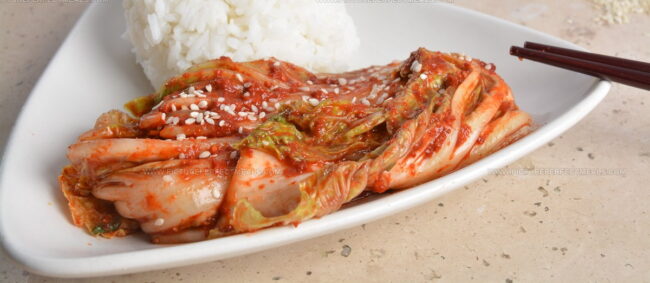
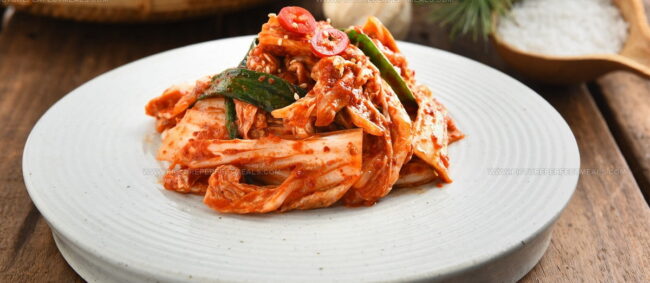

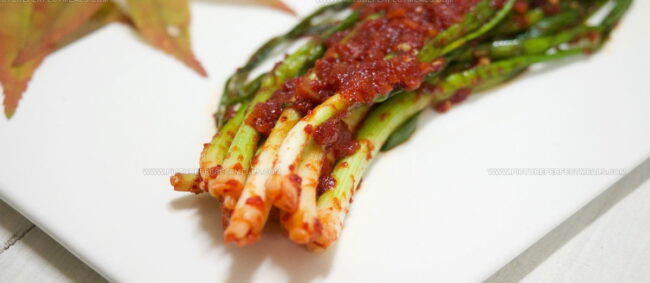
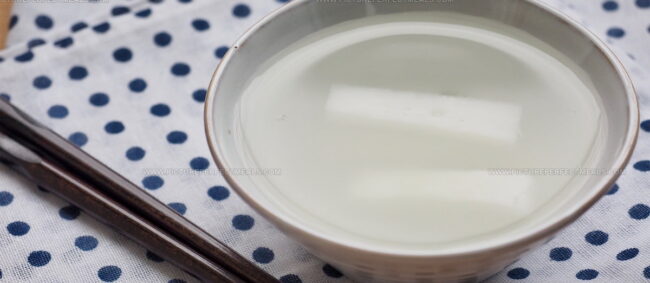
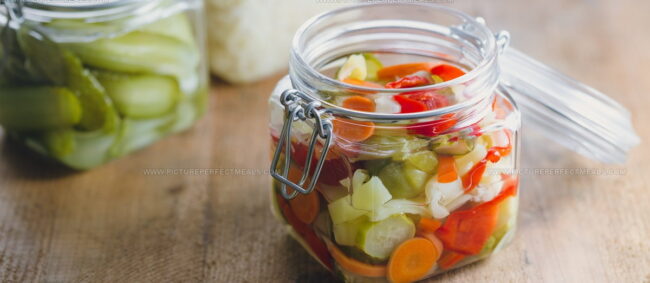


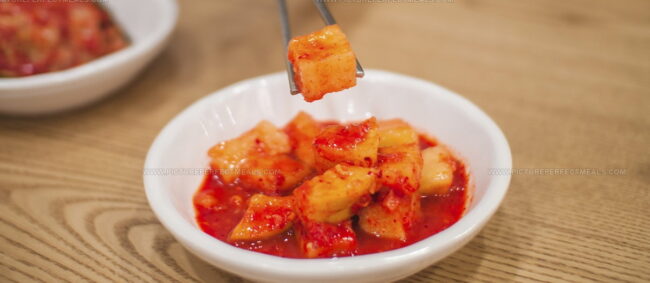
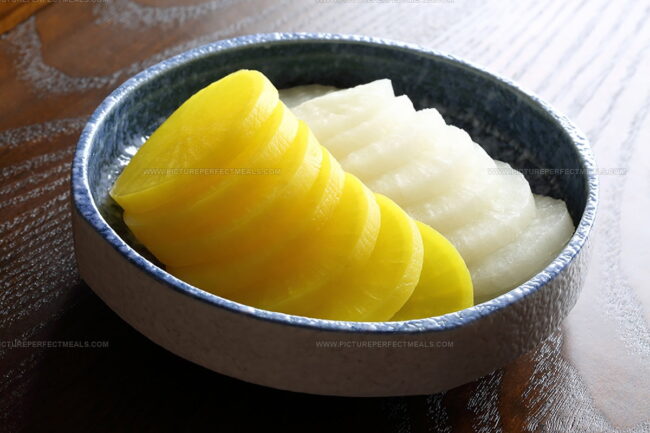
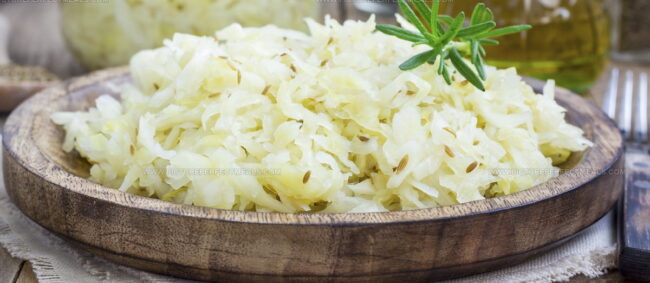



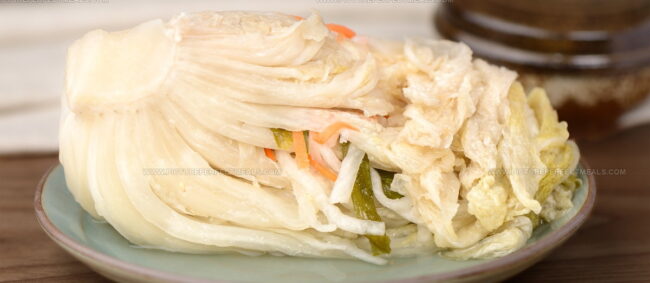



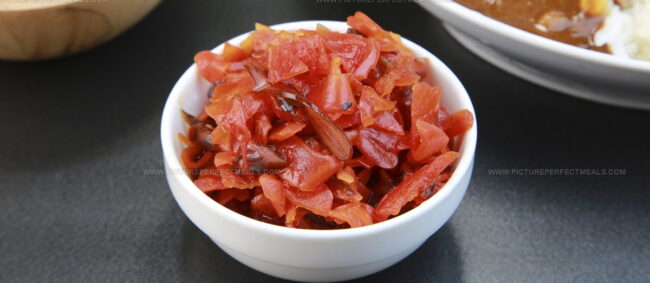
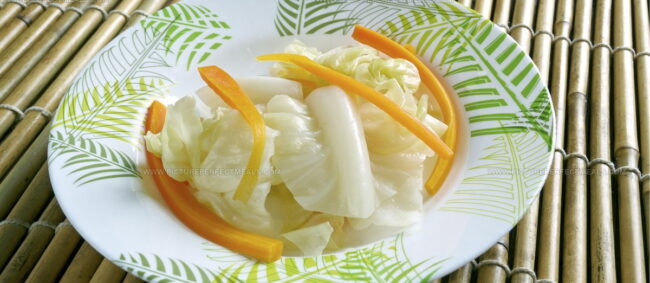

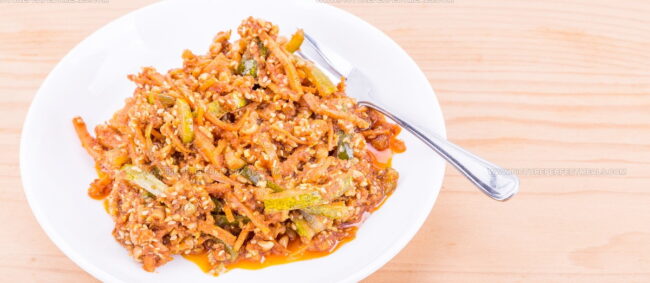
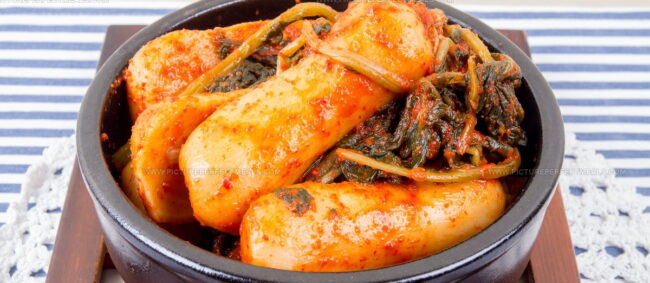
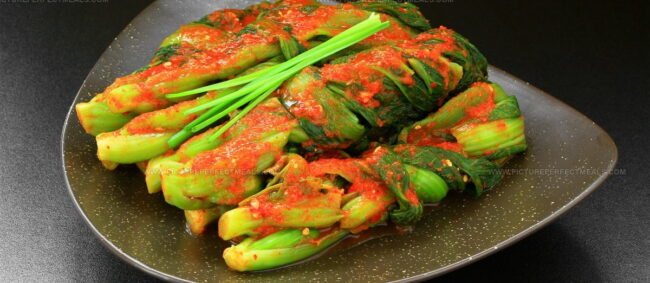

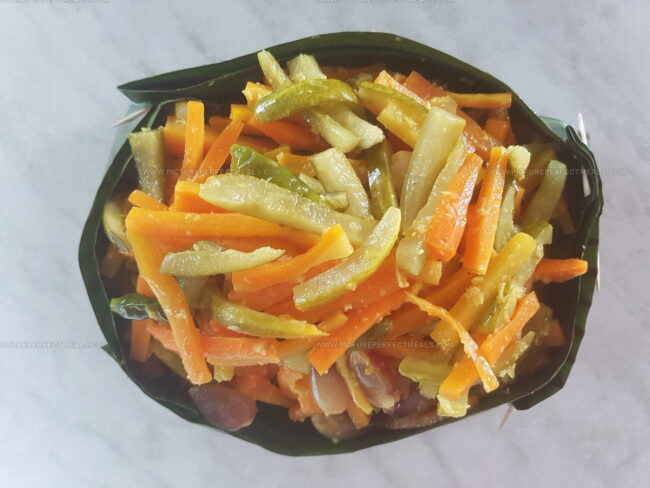

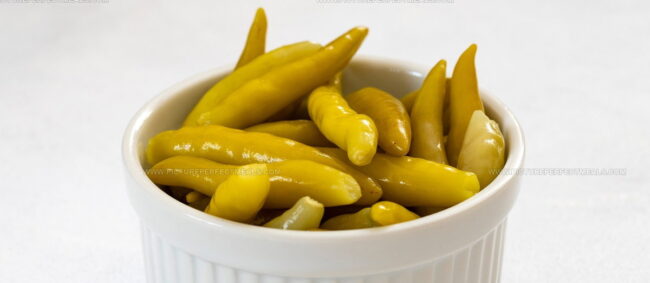
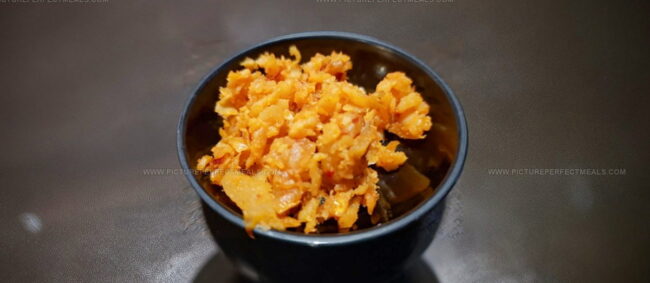

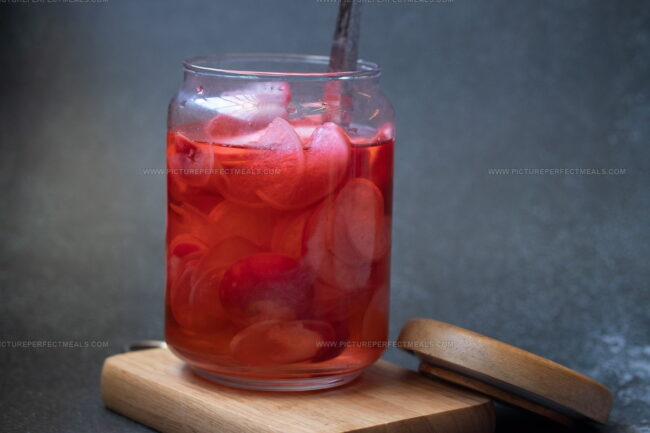
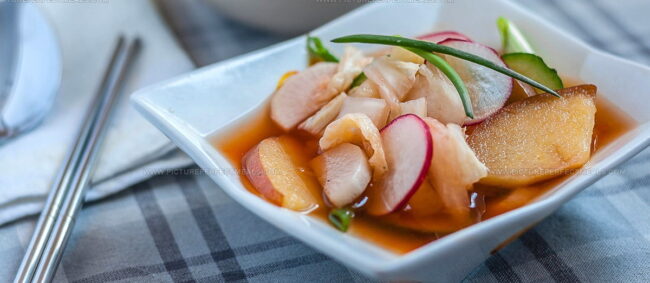
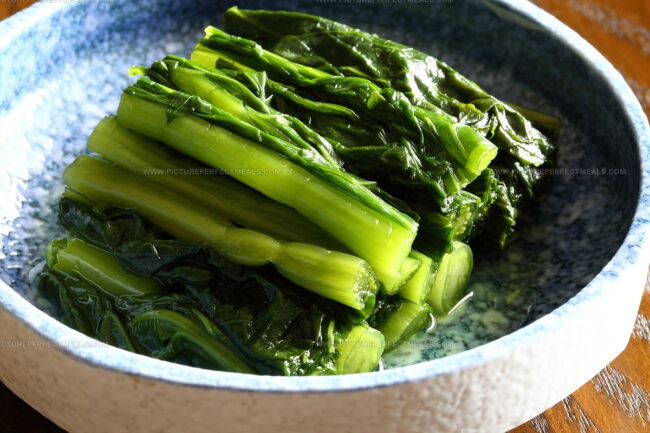
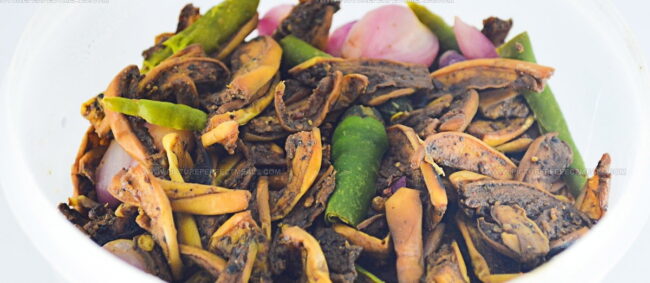

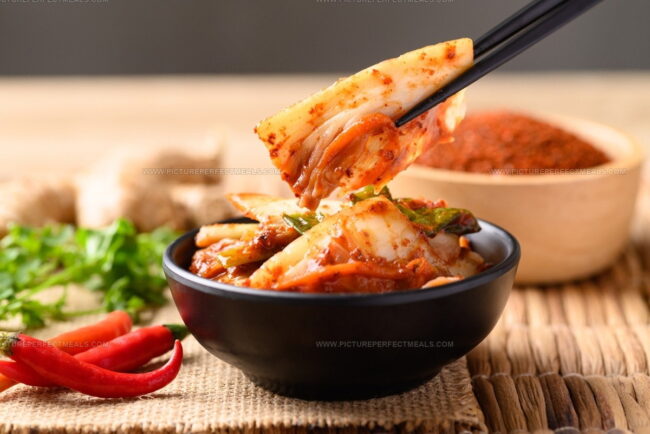
Daves Miller
Contributing Chef & Culinary Educator
Expertise
Education
Sullivan University, Louisville, Kentucky
White Mountains Community College, Berlin, New Hampshire
Daves is the friendly face guiding you through flavorful, fuss-free recipes at Picture Perfect Meals.
He studied culinary arts at Sullivan University and embraced Baking and Pastry Arts at White Mountains Community College. Daves specializes in comforting meals with vibrant flavors, highlighting fresh, seasonal ingredients.